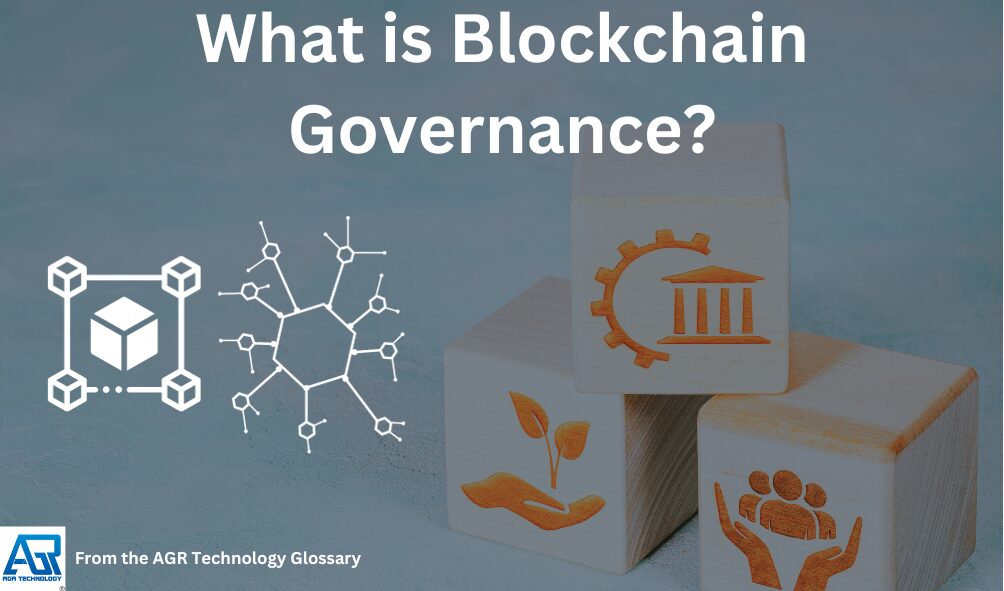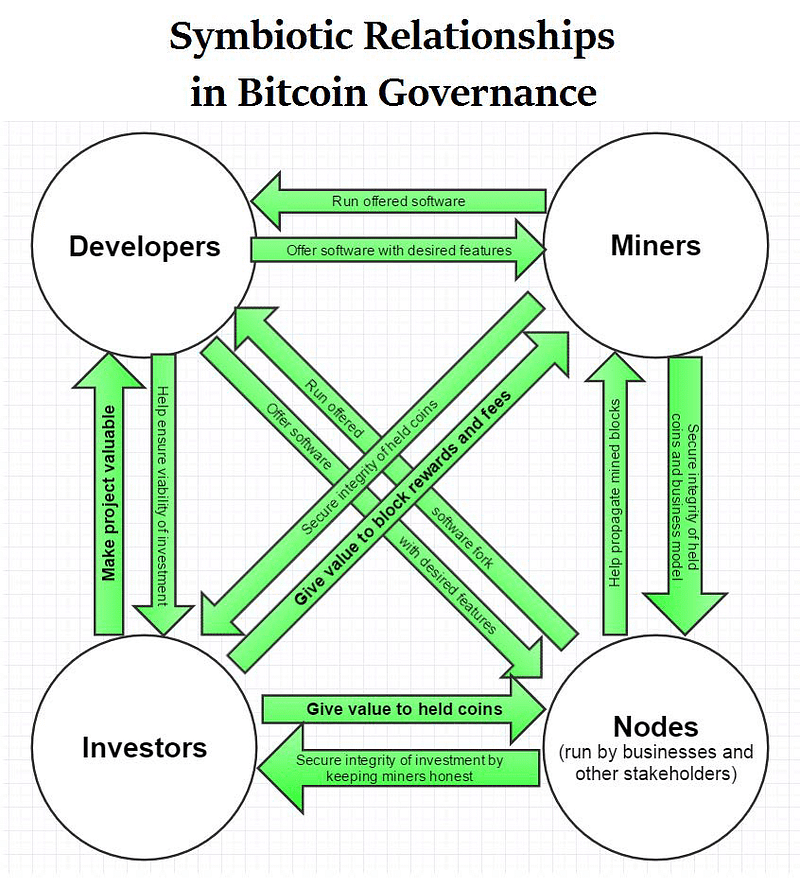What is Blockchain Governance? Understanding Decentralized Decision-Making

Blockchain governance is the system of rules and processes that guide the operation, management, and evolution of a blockchain network. It encompasses all aspects of the blockchain’s functionality, including its core protocol, consensus mechanism, changes to the code, and the decision-making process for future developments. Effective governance is crucial as it ensures the blockchain operates smoothly, remains secure, and adapts to the needs and desires of its stakeholders, which includes users, developers, miners, and investors.
Cryptocurrency exchanges all over the world in places like Norway, the Taiwan island, Hong Kong, Dubai/UAE, Singapore and New Zealand enable users to buy all kinds of different Crypto assets that belong to different Blockchains such as Solana, Bitcoin and the Ethereum Blockchain each of which has their own methods of governance.
At its core, the purpose of blockchain governance is to provide a structured approach that aligns the interests of all parties involved and supports the long-term sustainability of the platform. Governed by either on-chain mechanisms—rules that are encoded in the blockchain protocol itself—or off-chain strategies that involve the human elements of governance, the models can vary significantly from one blockchain to another. Understanding how governance works in the context of blockchain technology helps stakeholders to better engage with and contribute to the ecosystem.
Key Takeaways
- Blockchain governance establishes the rules and processes for maintaining a network’s operation and development
- Governance models differ and involve both on-chain protocol mechanisms and human-led off-chain strategies
- Effective governance aligns stakeholder interests, ensuring the platform’s security and adaptability
Fundamentals of Blockchain Governance
Blockchain governance refers to the systems and processes that collectively determine the direction and functionality of a blockchain network. It deeply influences how decisions are made and implemented, ensuring that the network evolves in a manner that aligns with its intended purpose and the interests of its participants.
Definition and Purposes

Blockchain governance is essentially the framework and rules by which decisions affecting a blockchain ecosystem are made. Its core purposes are to provide clear decision rights, define accountability among stakeholders, and align incentives within the ecosystem, ensuring secure and efficient operations. A well-defined governance model not only assists in maintaining the blockchain’s integrity but also facilitates scalability and adaptability to changes in technology or policy.
Types of Governance Models
The governance of blockchain can be structured in various models, each with its own mechanisms and implications:
- On-Chain Governance: This model embeds governance rules into the blockchain protocol itself, utilizing automated processes and coded algorithms. Decisions are made through mechanisms like voting, with results directly affecting the network through the protocol
- Off-Chain Governance: In contrast, off-chain governance occurs outside the protocol. It involves more traditional decision-making processes, such as meetings and discussions among stakeholders, with the finalized decisions then implemented into the blockchain
Each governance model has specific dynamics and mechanisms influencing a blockchain’s operability, including factors like consensus methods and decision-making rights. The choice of governance model deeply impacts the blockchain’s evolution, community engagement, and overall success.
Key Components within Blockchain Governance

Understanding the key components in blockchain governance is essential as they determine how a blockchain operates and evolves over time. This involves recognizing the roles of various stakeholders and the incentive systems that keep the network functional and secure.
Stakeholder Roles
Validators/Miners: They are responsible for maintaining the blockchain by validating transactions and, depending on the consensus mechanism, creating new blocks. Validators are crucial as they ensure the integrity and continuity of the blockchain.
Developers: They work on the underlying code and implement improvements to the blockchain protocol. Their role often includes addressing security issues and adding new features.
Users: They are the individuals and entities that engage with the blockchain, whether through transacting or by using applications built on top of the blockchain. Users often have a say in governance through various mechanisms depending on the blockchain’s structure.
Investors: These stakeholders have a financial interest in the blockchain and can influence governance decisions through their investment choices and participation in voting, if the system allows.
Incentive Structures
Transaction Fees: Participants engaging in transactions may pay fees, which incentivize validators/miners to include their transactions in the next block
Block Rewards: Miners or validators receive rewards for creating new blocks, which encourages them to contribute their computational resources to the network
Staking Rewards: In proof-of-stake systems, validators stake their own cryptocurrency to earn the right to validate transactions, which aligns their financial interest with the blockchain’s performance and security
Penalties/Slashing: To deter malicious behavior, some blockchains enforce penalties on validators who act dishonestly, like validating incorrect transactions, to maintain a trustless system
Governance Mechanisms

Blockchain governance ensures that all participants in the network work cohesively adhering to agreed-upon protocols and decision-making procedures. This governance is fundamental to maintain integrity and move forward collectively.
Consensus Protocols
Consensus protocols are the heartbeat of blockchain governance. They facilitate agreement on the state of the ledger and validate transactions. Notably, various consensus protocols like Proof of Work (PoW) and Proof of Stake (PoS) dictate how decisions are made and how disparate nodes reach a common ground. For instance, PoW requires computational work to validate transactions which has been famously used by Bitcoin. Alternatively, PoS selects validators in proportion to their quantity of holdings in the cryptocurrency, potentially increasing efficiency and reducing energy consumption.
Voting Systems
Voting systems in blockchain represent the democratic layer of governance. They allow stakeholders to have a say in key decisions, ranging from electing governing members to agreeing on protocol changes. The importance of these systems is underscored by their ability to embody the decentralized ethos of blockchain. Governance votes might be token-based, where the voting power is proportional to the number of tokens a user holds, or one-vote-per-entity, which aims for equality in decision-making regardless of holdings.
Challenges and Future of Governance in Blockchain
Blockchain governance involves complex trade-offs and sustainability concerns that will shape the future of how distributed ledger technologies function and evolve.
Scalability and Security Trade-offs
Blockchain faces a balancing act between scalability and security. As blockchain networks grow, they must process transactions efficiently without compromising the robustness of security protocols. For instance, while improving throughput is vital for mainstream adoption, it often involves creating larger blocks or shortening block times, which can potentially increase the risk of security breaches and centralization.
Sustainability of Governance Models
The sustainability of governance models in blockchain technology is a pressing issue. Long-term effectiveness of these models must cope with evolving regulatory landscapes and technological advances. Traditional governance frameworks are often inadequate for blockchain’s decentralized architecture. Therefore, defining blockchain governance principles is essential in ensuring that decentralized decision-making processes are consistent, transparent, and aligned with the interests of all stakeholders.
More related content:
Altcoin (Alternative crypto coins)
Digital Wallets / Smart Wallets
DAO (Decentralized Autonomous Organization)
Dapp (Decentralized Application)
Electronic Funds Transfer (EFT)
Fintech (Financial Technology)
How can you accept Cryptocurrency payments on your website?
Some of the best small business loans in Australia
Different platforms to trade CFDs in Dubai
Mortgage affordability calculator
Comparison of the best CFD brokers/apps in Australia
Some of the best Cryptocurrency exchanges for Indian users
Best Crypto exchanges for South Africa
Top Crypto exchanges for Saudi Arabia
Alternatives to Swyftx for Australian Crypto users
Alternatives to Etoro for Australian CFD traders
Some of the best Crypto exchanges for Canadians
Top CMC Markets Alternatives in Australia
Coinspot alternatives for Australian Crypto traders
Crypto wallet recovery services by AGR Technology
Web3 Marketing Services & Solutions For Brands
Curated summary of some of the best loan providers for Melbourne businesses
List of some of the best day trading applications for Australians
Top Forex trading platforms & brokers for Canadians
Top Etoro alternatives for Australian forex traders
What to look for when choosing a neobank app
Bibliography / Citation(s):
Blockonomi [Online]. Available at: https://blockonomi.com/blockchain-governance/ (Accessed: 14 January 2024).
“Blockchain Governance on Decentralized Networks” Gemini, www.gemini.com/cryptopedia/blockchain-governance-mechanisms. Accessed 14 Jan. 2024.
Tandfonline https://www.tandfonline.com/doi/full/10.1080/10580530.2020.1720046. Accessed January 12, 2024.
Accessed January 17, 2024. https://i.pinimg.com/originals/e5/55/a0/e555a009775f8fe0022b15e45b767865.png.
[Online]. Available at: https://cdn-images-1.medium.com/v2/resize:fit:800/0*ik5pPwDFfOLNVq2X (Accessed: 17 January 2024).
![logo-new-23[1] logo-new-23[1]](https://agrtech.com.au/wp-content/uploads/elementor/thumbs/logo-new-231-qad2sqbr9f0wlvza81xod18hkirbk9apc0elfhpco4.png)